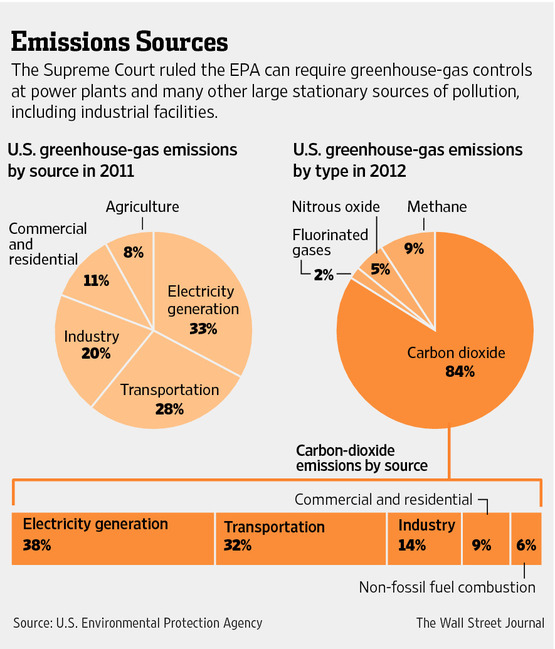Supreme Court Ruling Backs Most EPA Emission Controls
< < Go Back
Justices Say EPA Can Require Pollution Controls but Limit Permitting Process.
The U.S. Supreme Court on Monday allowed the Environmental Protection Agency to require greenhouse-gas controls on power plants and other large stationary sources of pollution, but ruled the agency was too aggressive in its approach.
The court’s divided decision, written by Justice Antonin Scalia, amounted to a middle-ground way to resolve the case and may have only a minor impact on the Obama administration’s current regulations, which require power plants and other large emissions sources to add greenhouse-gas controls when they modify an existing facility or build a new one.
Justice Scalia chastised the EPA for rewriting a clean-air permitting program established by Congress. The program requires large emitters of certain pollutants to obtain permits before expanding or modernizing. Those facilities must limit emissions by adopting the “best available” technologies.
The EPA’s approach “would bring about an enormous and transformative expansion in EPA’s regulatory authority without clear congressional authorization,” Justice Scalia wrote. Justice Scalia said the EPA couldn’t bring emitters into the program solely based on their greenhouse-gas emissions, but could require greenhouse-gas controls at facilities that are already covered by the regulations thanks to their emissions of other pollutants.
“It bears mention that EPA is getting almost everything it wanted in this case,” Justice Scalia said from the bench. The ruling allows the agency to regulate 83% of greenhouse-gas emissions, he said, while the regulation the court struck would have raised that percentage to 86%.
“To permit the extra 3%, however, we would have to recognize a power in EPA and other government agencies to revise clear statutory terms,” he said, adding that would contradict “the principle that Congress, not the president, makes the law.”
The case produced a splintered lineup of the justices. Chief Justice John Roberts and Justice Anthony Kennedy, two of the court’s conservatives, joined all of Justice Scalia’s opinion. Other conservative justices joined parts of the ruling that went against the EPA. The court’s four liberal justices joined portions that sided with the agency.
The case, which attracted close interest from environmental groups and a wide array of industries, marked the court’s first review of the EPA’s greenhouse-gas efforts since a landmark 2007 Supreme Court decision allowed the EPA to regulate carbon dioxide and other heat-trapping gases associated with climate change.
More From The Wall Street Journal (subscription required):




